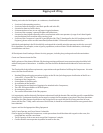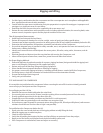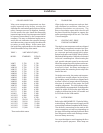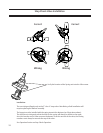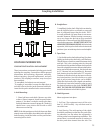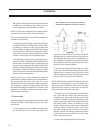
20
To begin the second evacuation, allow the pump
to operate and reduce the pressure again to
within 50 to 1000 microns. After this reading is
reached, allow the pump to operate 2 or 3 hours.
Stop the pump and let the system stand with
this vacuum. Again using dry nitrogen, raise the
system pressure to zero.
For the third evacuation, follow the previous
procedure with the pump operating until system
pressure is reduced below the 1000 micron level.
Run the pump an additional 6 hours and hold the
system for approximately 12 hours at low pres-
sure. After this, again break the vacuum with dry
nitrogen and allow the pressure in the system
to rise slightly above zero pounds (psig). Install
new drier cartridges and moisture indicators.
Charge the system once more below the 1000
micron level and use the refrigerant designed
for the system.
When properly evacuating the system as outlined
above, the system is dry, oxygen-free and free of
non-condensables. The piping should not be in-
sulated before the evacuation process is started.
If moisture is in the system before evacuating, it
condenses in low places and freezes. If this hap-
pens, it can be removed by gently heating the
trap farthest away from the vacuum pump. This
causes the ice to melt and water to boil. Water va-
por collects in the next trap towards the vacuum
pump. This process should be repeated until all
pockets of water have been boiled off, and the
vacuum pump has had a chance to remove all the
water vapor from the system.
VII. UNIT OIL CHARGING
The compressor unit is shipped from Vilter with
no oil charge. The initial oil charge can be made
through the drain valve at the oil receiver/separa-
tor. Vilter motor driven and manually operated
oil chargers are available for this purpose. Once
the unit has been started and is operating above
50% capacity, oil may have to be added to bring
the oil level to the normal operating point. With
the unit operating, oil should be added through
the charging connection at the suction strainer.
The normal operating level is between the (2)
sight glasses on the oil separator. See Table 2 for
approximate oil charge requirements.
TABLE 2. OIL CHARGE
Oil Separator Size Approximate Oil
Charge (Gallons)
VSR 16” 20 to 27
VSR 20” 22 to 31
VSM 20” 20 to 25
VSM 30” 30 to 35
20” 30 to 40
24” 40 to 50
30” 60 to 75
36” 95 to 105
42” 145 to 165
The oil level may be above the top sight glass
at this time. Later, when the unit is placed in
operation, there will be some drop in the oil level
as the various oil lines, oil lter and other piping
becomes charged with the normal amount of
oil that will be in circulation. This drop in oil
level should bring the level in the oil receiver/
separator into the normal operating range. Do
not mix oils.
A. Oil For Single Screw Compressors
Due to the need for adequate lubrication, Vilter
recommends only the use of Vilter lubricants,
designed specifically for Vilter compressors.
With the extensive research that has been per-
formed, we are able to offer refrigerant specic
lubricating oils. Use of oil not specied or sup-
plied by Vilter will void the compressor warranty.
Please contact your local Vilter representative or
the Home Ofce for further information.
VIII. SYSTEM REFRIGERANT CHARGING
CAUTION
When charging the system, make sure the
compressor unit is pressurized from the dis-
charge side of the compressor. Pressurizing the
compressor from the suction side may cause
rotation of the compressor, without oil supply,
which could lead to internal damage.
Installation




